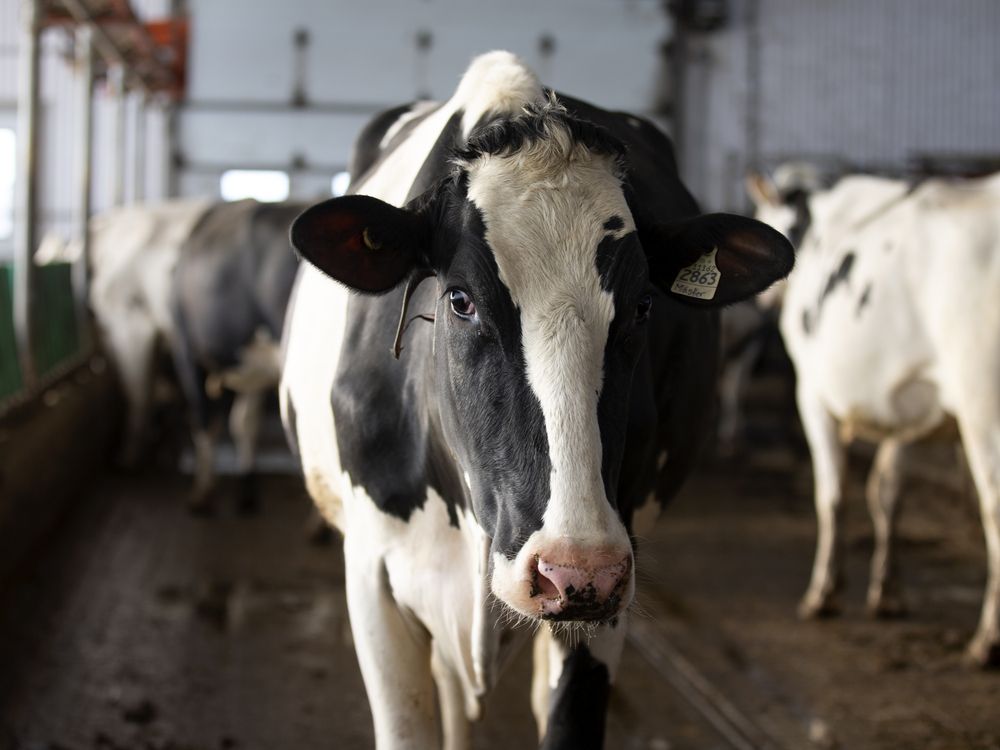U.S. hits back at Canada’s dairy rule changes by launching second trade dispute

The U.S. is seeking dispute settlement consultations with Canada as outlined in the USMCA

Article content
The United States is launching a second trade formal dispute against Canada in response to the Trudeau government’s changes to federal rules on dairy imports.
Advertisement 2
Story continues below
Article content
The move is the latest escalation in a years-long feud between the two countries over Canada’s attempts to protect its domestic dairy farmers from American milk and cheese. The U.S. initiated its original trade dispute in 2020 — the first ever dispute under the new NAFTA agreement — where it argued that Canada wasn’t keeping its treaty promises to soften trade barriers on foreign dairy.
An international dispute resolution panel agreed with the U.S. in a key ruling earlier this year, forcing Canada to change its rules on how U.S. cheese enters the country. Canada finalized a new set of rules on May 16. But even a Canadian senior government official predicted the change wouldn’t satisfy the U.S., since the new rules are likely to produce the same result as the old ones.
Advertisement 3
Story continues below
Article content
“I don’t think the U.S. is going to be happy with this,” the official said earlier this month.
On May 25, the U.S. confirmed as much.
U.S. Trade Representative Katherine Tai said she was “deeply troubled” by the new policy. In response to the policy, the U.S. is seeking dispute settlement consultations with Canada — a first step in the trade dispute process laid out in the U.S.-Mexico-Canada Agreement (USMCA), which replaced the North American Free Trade Agreement in 2020.
“Canada’s protectionist dairy policies are a top concern for the U.S. Department of Agriculture under the Biden-Harris Administration,” U.S. Secretary of Agriculture Tom Vilsack said in a statement. “Canada has failed to honour and implement its USMCA commitments.”
Advertisement 4
Story continues below
Article content
The call for consultations, while significant, isn’t the most drastic step the U.S. could have taken. Washington would have been within its rights under USMCA to slap Canada with retaliatory tariffs, according to Nicolas Lamp, a former dispute settlement lawyer at the World Trade Organization who now teaches trade law at Queen’s University.
“They could have calculated essentially how much they’re losing,” he said, “and could have started putting tariffs on Canadian trade, Canadian imports in the equivalent amount.”
Canadian Trade Minister Mary Ng said the government respects the United States’ right to initiate a formal dispute, but believes the new rules bring the federal rules in line with the panel’s ruling.
Advertisement 5
Story continues below
Article content
“Canada has met its obligations,” Ng said in a statement.
The dispute centres on tariff-rate quotas, or TRQs, which are a set amount of dairy imports allowed to cross into Canada without being subject to prohibitively high tariffs. The tariffs are part of Canada’s national supply management system that is designed to protect domestic dairy, poultry and egg farmers from swings in the market by capping production, setting prices and keeping foreign challengers out of the country.
The Canadian government views supply management as an important tool to ensure the country has a stable food supply but it has become a persistent source of aggravation for trade partners.
As a concession to those partners, Canada has agreed to expand access to TRQS under recent free-trade agreements — including the USMCA. American milk lobbyists at first cheered the extra TRQs as a victory, but soon they were accusing Canada of playing games.
Advertisement 6
Story continues below
Article content
The issue was Canada reserved almost all TRQs for domestic processors, including the three major dairy companies — Saputo, Agropur and Lactalis — that control the majority of the market. The U.S. argued the policy stopped American firms from getting the full economic benefit from the free trade deal, since Canadian dairy processors were more inclined to bring in cheap cheese and turn it into higher-value retail products, such as frozen pizza, rather than import chèvre from Vermont goat herds.
The panel sided with the U.S., ruling that Canada couldn’t reserve TRQs solely for processors. So in its new policy, Canada expanded the pool of eligible applicants to “distributors” as well as processors and said it will now award quota based on marketshare.
Advertisement 7
Story continues below
Article content
-

Trudeau government stands firm on new dairy rules despite anger from U.S. milk lobby
-

New Zealand launches trade dispute against Canada in growing dairy backlash
-

Billionaire boss of dairy giant Lactalis says his company is facing inflation like he’s ‘never seen’
-

Soaring dairy prices drive steepest rise in food inflation in 13 years
“That means that Canada continues to exclude other eligible applicants, such as retailers and food service operators,” the U.S. said in a statement on May 25.
U.S. dairy exporters and Canadian retailers have criticized the new rules as superficial, because using marketshare to decide who gets quota means the big processors will still control all the imports.
The Canadian government appears to agree with that assumption. The senior official, who spoke earlier this month on condition of anonymity, said the new rules “would be expected to yield very similar results because that’s how we’ve allocated in the past.”
“We wouldn’t anticipate (the U.S.) to be satisfied with anything less than full retailer access. Unfortunately for the United States, they did not negotiate that.”
• Email: [email protected] | Twitter: jakeedmiston
Advertisement
Story continues below









